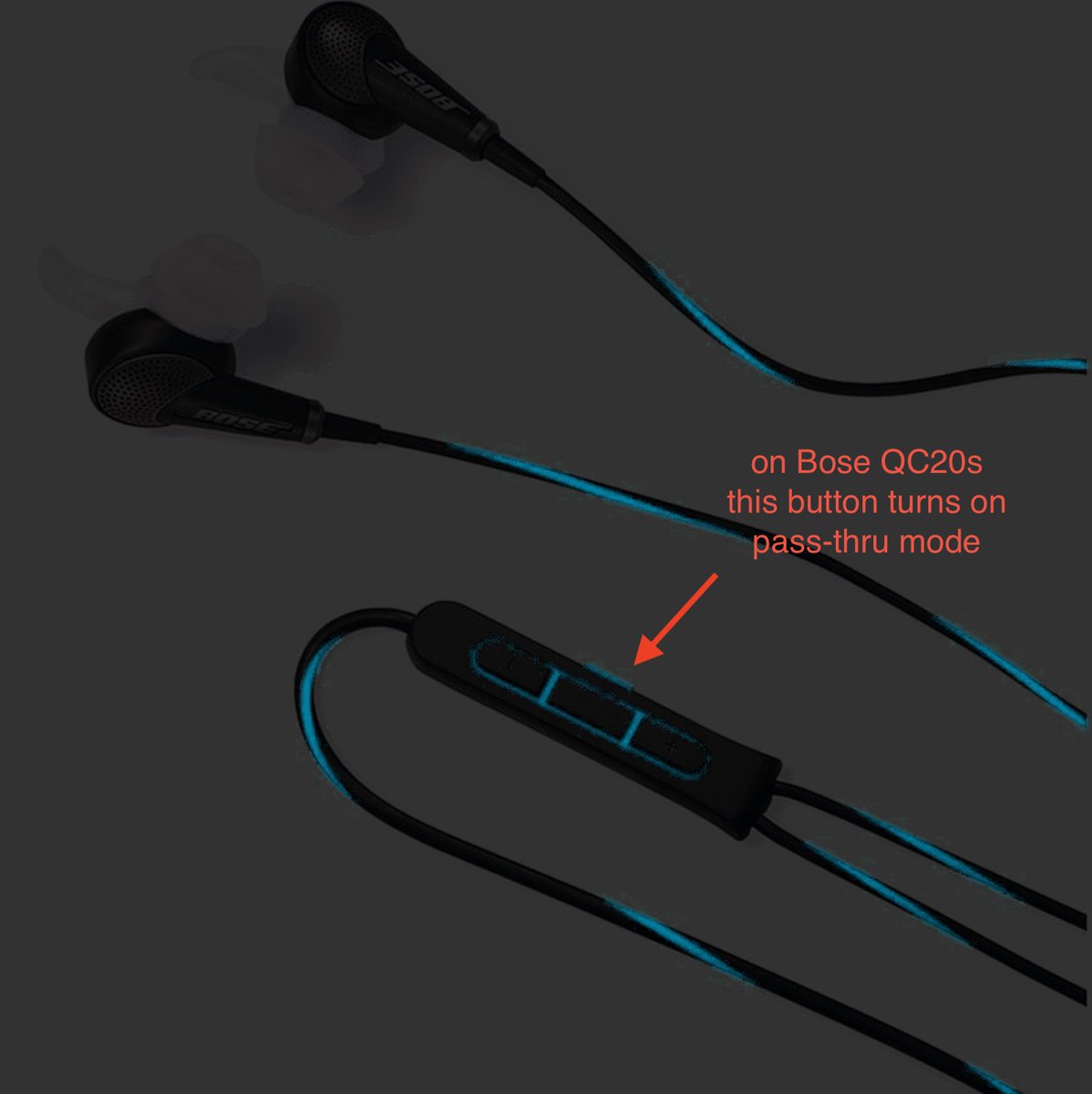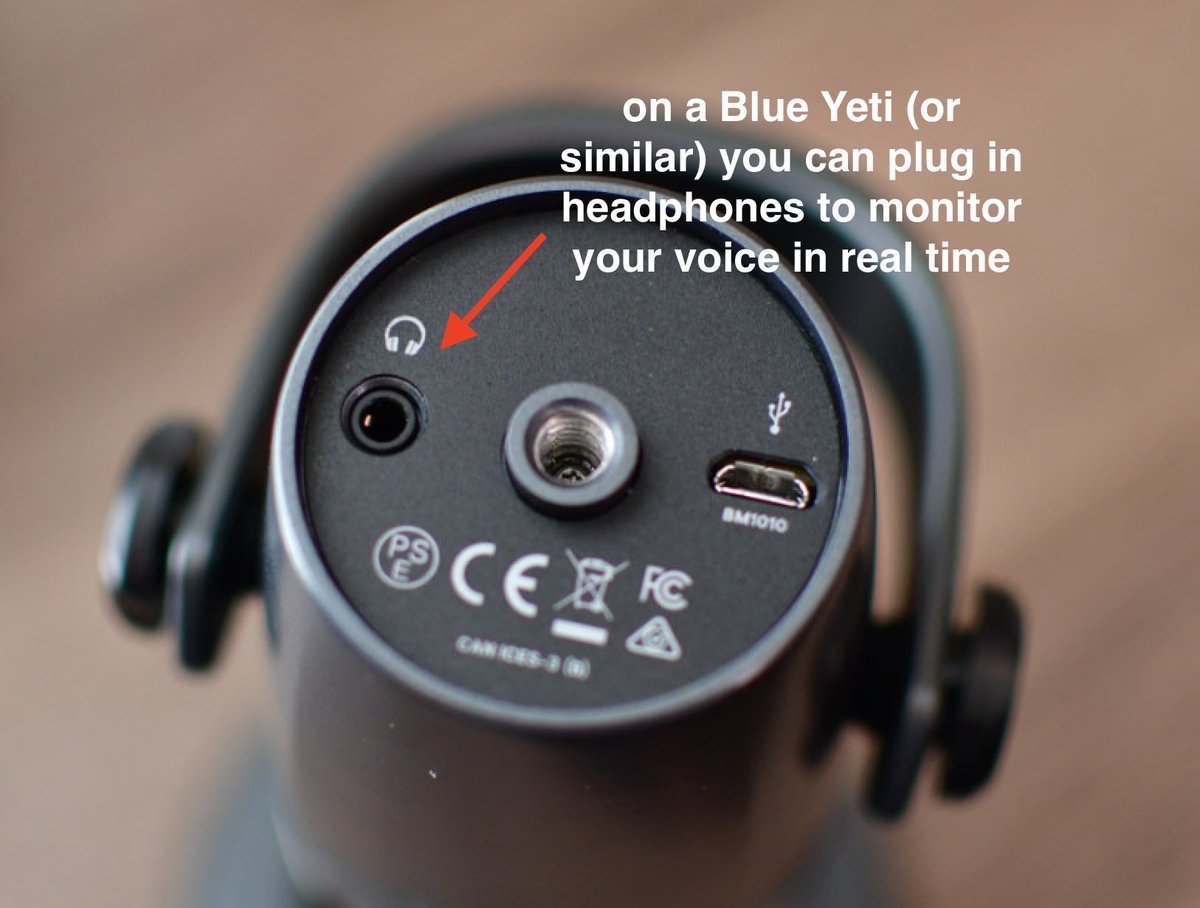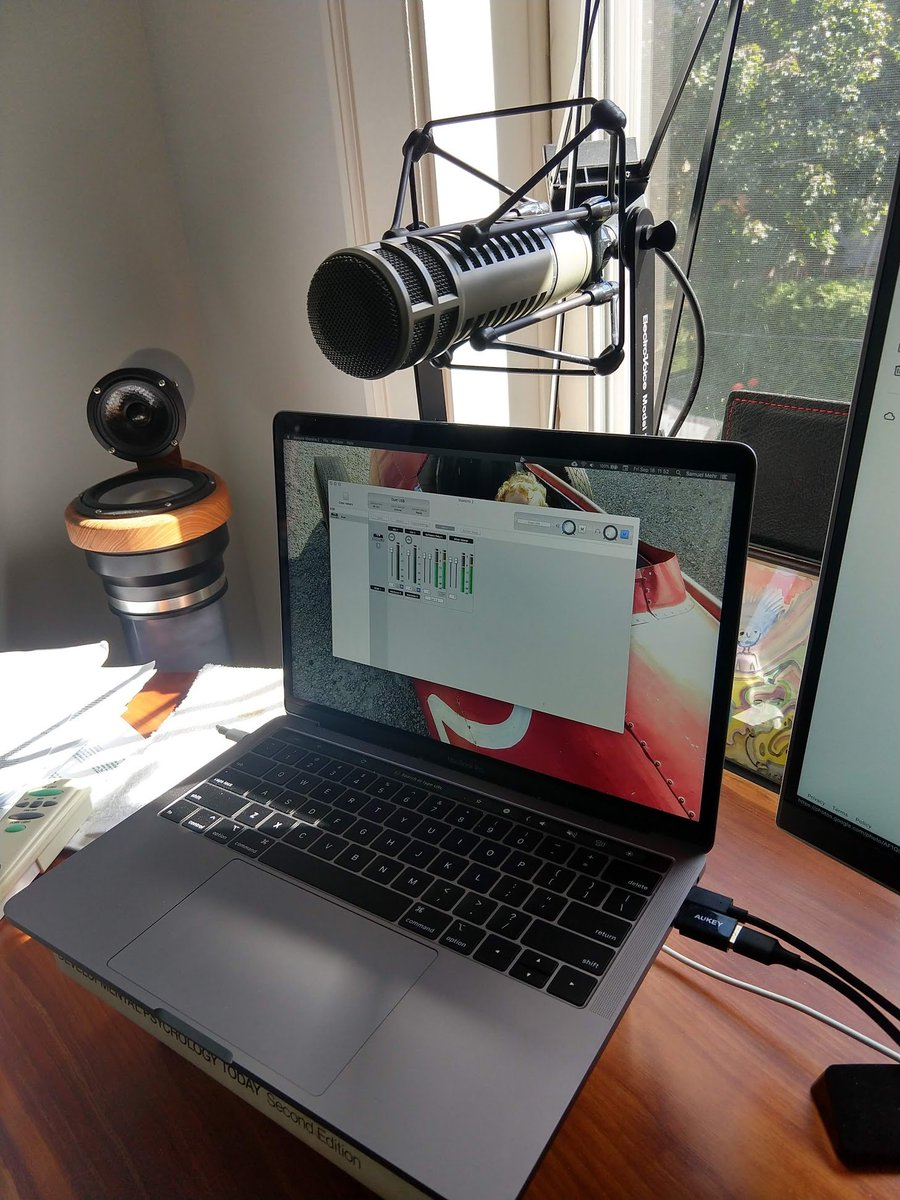a lot of academics seem unhappy with their experience recording lectures & their "zoom fatigue" from long days of videoconferencing.
I& #39;m a scientist who studies music and sound. I hope this thread will help.
here is Taylor Swift on stage. look what& #39;s in her ear!
1/
I& #39;m a scientist who studies music and sound. I hope this thread will help.
here is Taylor Swift on stage. look what& #39;s in her ear!
1/
that thing is called an "in-ear monitor", a term for an expensive headphone.
Taylor is using it to *monitor* the sound of her own voice and guitar, and probably the sound of everything else in her performance — background vocals, other musicians, maybe a click track, etc.
2/
Taylor is using it to *monitor* the sound of her own voice and guitar, and probably the sound of everything else in her performance — background vocals, other musicians, maybe a click track, etc.
2/
that means that the sounds her microphone are picking up — her own voice — is getting piped back into her ears in real time.
this is ubiquitous in professional recording environments, and not just music. here& #39;s legendary NPR newscaster Carl Kasell with his mic and monitors.
3/
this is ubiquitous in professional recording environments, and not just music. here& #39;s legendary NPR newscaster Carl Kasell with his mic and monitors.
3/
in professional recording environments each performer has their own "mix". sometimes the crew/sound techs set these up in a rehearsal or sound check.
other times each performer has their own mixing board that they use themselves to customize what they hear.
4/
other times each performer has their own mixing board that they use themselves to customize what they hear.
4/
what goes into your mix? depends on what you& #39;re doing. singers and drummers often like a lot of bass. when playing in a woodwind section, you want the rest of the woodwinds to be hot.
what about spoken word? there probably isn& #39;t a backing band for your psych 101 lecture.
5/
what about spoken word? there probably isn& #39;t a backing band for your psych 101 lecture.
5/
spoken word performers like Carl and, well, all academics in 2020, also benefit from a good headphone mix.
When newscasting for 20+ years, Carl needed to hear his own voice along with intro/outro music for different NPR segments, cues from producers, interviewees, etc.
6/
When newscasting for 20+ years, Carl needed to hear his own voice along with intro/outro music for different NPR segments, cues from producers, interviewees, etc.
6/
but I& #39;d be willing to bet that the most prominent sound in his mix was his own voice.
why? the job of a spoken word performer (again, that& #39;s us, 2020 academics) is to use one& #39;s voice to communicate.
it& #39;s easier to communicate when you know what your listeners are hearing.
7/
why? the job of a spoken word performer (again, that& #39;s us, 2020 academics) is to use one& #39;s voice to communicate.
it& #39;s easier to communicate when you know what your listeners are hearing.
7/
I speculate that hearing yourself in a headphone mix has a few different effects. (n.b. would be awesome to test these empirically).
(a) you don& #39;t talk as loudly, because you know how loud you really are. Your voice may last longer and get less hoarse.
8/
(a) you don& #39;t talk as loudly, because you know how loud you really are. Your voice may last longer and get less hoarse.
8/
(b) videoconferencing is more pleasant, because you can hear how you sound *relative to other speakers*, to a greater extent than without monitoring.
(n.b. this is complicated by features like automatic leveling, but we& #39;ll leave that for another day)
9/
(n.b. this is complicated by features like automatic leveling, but we& #39;ll leave that for another day)
9/
(c) when you know what you sound like in real time, you can use the mic as a tool, not just a passive instrument. radio hosts do this all the time. e.g., you can lean into your mic to make your voice more "present" to emphasize a point.
10/
10/
(d) [most speculative] this might improve the social aspects of videoconferencing because you can exert much more fine-grained control over the sound of your voice — something you do in everyday conversation without thinking about it, but which is painfully missing from vc.
11/
11/
(e) as the sound of your voice moves from your wifi to Zoom& #39;s servers to your students **its quality will only get worse**. this makes it all the more important that the source audio is high-quality, esp for students on shaky connections, with poor speakers/headphones, etc.
12/
12/
OK, so how can you try this out? here are a few simple options.
(a) if you have active noise-cancelling headphones with a pass-thru (a "hear the flight attendant" button), try it. the headphones& #39; internal mics will pick up your voice and feed it into your mix automatically.
13/
(a) if you have active noise-cancelling headphones with a pass-thru (a "hear the flight attendant" button), try it. the headphones& #39; internal mics will pick up your voice and feed it into your mix automatically.
13/
(ht to @eisenberg_andy for that solution which many academics who used to travel a lot can use, like, right now).
(b) if you have a Yeti or other USB mic with a direct headphone output, use that headphone out to monitor your own voice. Set the mic as your audio device for both input/output and give it a try.
(n.b. you may need to adjust levels to make this work well)
14/
(n.b. you may need to adjust levels to make this work well)
14/
(c) if your dept is paying, or really really love your students, or are just an audio nerd, you can get a more serious mic like my lab& #39;s hilariously large Electro-Voice RE20 (i know, i know) & run it through a DAC with hardware monitoring, as in an actual recording studio.
15/
15/
from this poll https://twitter.com/samuelmehr/status/1309455802181316608?s=20">https://twitter.com/samuelmeh... it seems clear that
(1) many academics have mics but aren& #39;t necessarily using them to their full potential, and
(2) many academics would like to do so, whether or not they have fancy equipment
16/
(1) many academics have mics but aren& #39;t necessarily using them to their full potential, and
(2) many academics would like to do so, whether or not they have fancy equipment
16/
my own view is that bc our job is to communicate with our voices, it& #39;s a good idea to think a little bit about the technology involved in doing so.
I think it can make our students& #39; and our own lives better in 2020 academia.
anyway hope this helps!
17/17
I think it can make our students& #39; and our own lives better in 2020 academia.
anyway hope this helps!
17/17
ht @VladChituc for asking me to do this thread. follow him for  https://abs.twimg.com/emoji/v2/... draggable="false" alt="🔥" title="Feuer" aria-label="Emoji: Feuer"> psych and also amazing bread making
https://abs.twimg.com/emoji/v2/... draggable="false" alt="🔥" title="Feuer" aria-label="Emoji: Feuer"> psych and also amazing bread making
just for fun, and bc everyone here is asleep (so it’s actually quiet), I recorded myself reading a bit of this thread to show what a good mic sounds like with live monitoring.
for reality’s sake I did a single take without editing, recorded via Zoom w/ no audio processing.
for reality’s sake I did a single take without editing, recorded via Zoom w/ no audio processing.
Update!
as a comparison here’s the same set of tweets read a second time with no upgraded equipment, just my laptop mic, and no monitoring.
as a comparison here’s the same set of tweets read a second time with no upgraded equipment, just my laptop mic, and no monitoring.
as you can hear, it’s passable, though noticeably less clear and pleasant to listen to (especially on headphones).
more to the point of this thread: it was less pleasant for *me* to record!
more to the point of this thread: it was less pleasant for *me* to record!
as I’ve said in a few replies, I think a prescriptive “everybody should get fancy stuff” is unhelpful/unrealistic.
the point of this thread is that audio is complex & so it& #39;s a good idea for academics to think about it when considering their own set of needs, budgets, & prefs.
the point of this thread is that audio is complex & so it& #39;s a good idea for academics to think about it when considering their own set of needs, budgets, & prefs.

 Read on Twitter
Read on Twitter






